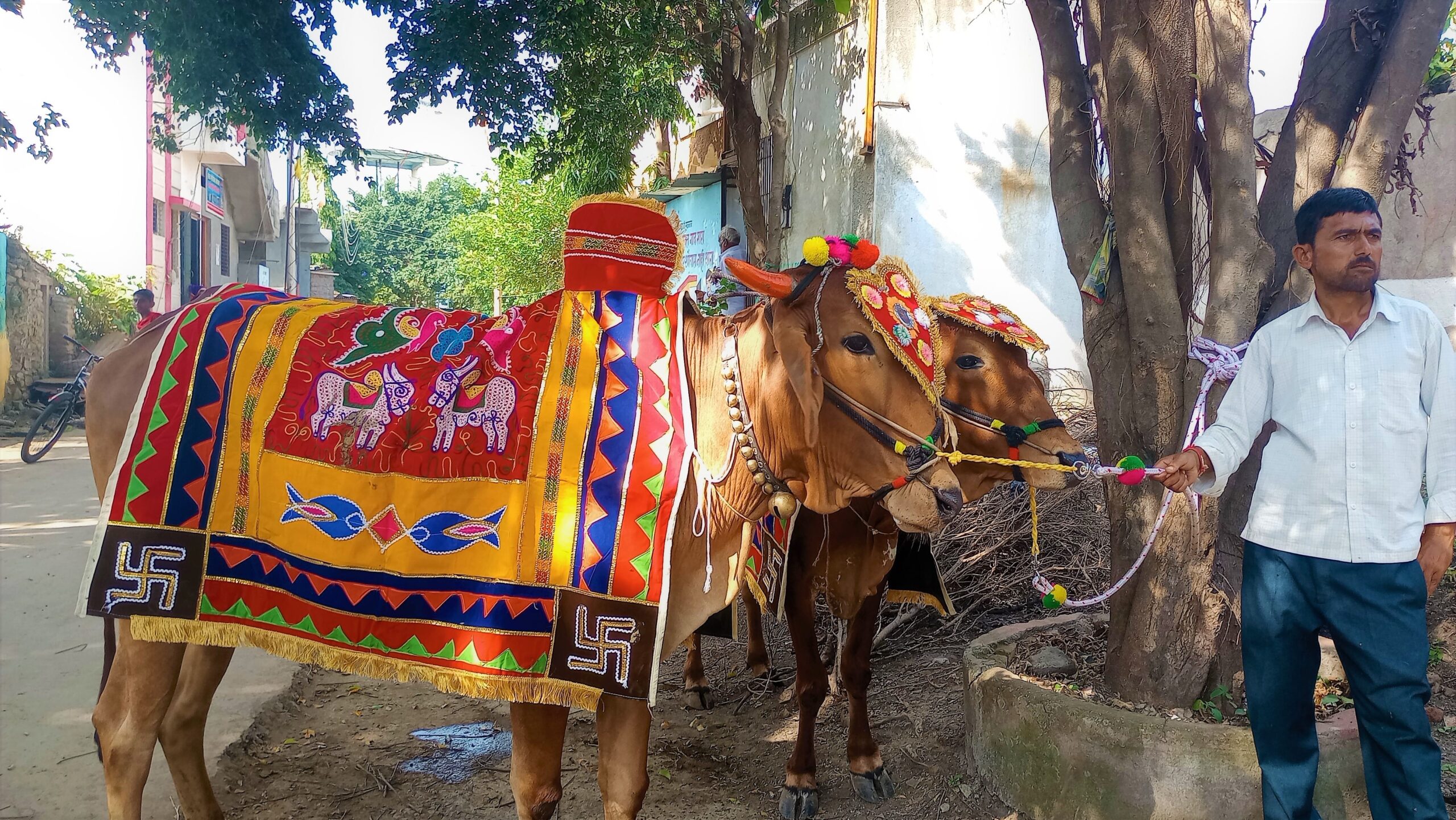India is known all over the world for its rich collection of different cultures. People belonging to different religions, regions, caste and sect celebrate various festivals across the country. The uniqueness of Indian festivals is that it revolves around Lord’s birthdays, traditional rituals, seasonal changes, or agricultural yields.
One such festival is called Bail Pola – celebrated especially in Maharashtra in western India, by farmers to pay tribute to the bulls. On this day, farmers worship and thank the bulls who are a crucial part of agricultural and farming activities. Pola is celebrated on the new moon day of the Sharvan month of the Hindu calendar (corresponding to the Aug-Sep period of the Gregorian calendar). During Pola, the bulls are not made to work in the fields. I chose to visit Sangaon village where my host organisation, MANAVLOK works and document.
Sangaon is approximately 12 KM from Ambajogai taluk of Beed district. The Muhurat (auspicious start) for the ceremony was at 4 PM on 26th August 2022. The male members of the family take the bulls to the field. They apply turmeric and oil all over the body of the bull and bathe them with hot water. The bulls are decorated by applying color paints like orange, yellow, and blue to their horns and by putting ornaments on them. A bright-colored decorative piece of clothing is placed on top of their bodies. Flowers and balloons are put around the neck of bullocks. Ghungroo (a tinkering anklet with bells) is tied to their feet and around their neck. Once the bulls are dressed up, they are taken onto the streets of the village.
A huge herd of bulls walk on the road with their owners holding the rope tightly. Mini trucks were loaded with loudspeakers. Narrow streets were full of dung. Kids were running on the streets and bursting firecrackers. The auspicious ceremony began at the temple located in the village. The farmers dragged the bulls and performed Parikarma (circling the inner sanctum of the temple in a clockwise direction). The atmosphere was energetic. People were screaming in enthusiasm and were playing dhol-tasha (type of drums). Ear-deafening Marathi beats were being played on the loudspeaker, enough to make anybody dance and be rendered deaf at the same time. With little space, bulls were jumping and trying to free themselves from their owner’s hands. Seeing them run reminded me of the movie ‘Zindagi Naa Milegi Dobara‘, where bulls were racing after Hrithik Roshan, Farhan Akhtar, and Abhay Deol. Gladly, the bulls were not after me. But I was afraid, I might come in their way and get crushed instantly.
The bulls were taken to their respective households where they stand in a queue. Women were already at the entrance of the house holding Pooja ki Thali with haldi (turmeric), kumkum (vermilion), rice grains, and sweets. The front of the house was decorated with rangoli. Women began worshipping the bulls by putting a tilak on their foreheads and feeding them with homemade poori, rice, and a sweet dish. Along with the bulls, the yoke (used for ploughing the fields) is also placed on the floor and worshipped. One by one each family member repeated the process while the male members held the rope of the bulls firmly. Ironically, when the bulls misbehaved or tried to run away, they were occasionally hit by a whip or a large wooden stick.
Women circumambulated around the bulls with pooja ki thaali, an odd number of times – preferably 3 or 5. The kids followed their mothers and aunts while playing dhol–tasha. They enchanted prayers and showered rice on the bulls.
“Bail pora saal humare kheton mei kaam karti hai, chahe garmi ho ya baarish, hum is ek din unko pujate hai, ek tarike se hum unko thank you kehte hai“
said one of the villagers about the festival
After an hour of worshipping, the rituals ended by putting a tilak on every member’s forehead. Bulls were taken back to the field and the rest of the family gathered on the verandah to enjoy the festive meals. We were served traditional dishes – Puran Poli, Papudi, and Amti. Bail Pola displays the affection and close association between humans and animals. It is a way where humans show their respect towards them. This festival celebrates local culture and traditions while expressing gratitude to bulls.
Also read a similar blog by our 2017 cohort fellow, Vishal Narula: Bail Pola: A Way Of Celebrating Human-Animal Relationship























0 Comments